
Meetings and Events | News | Research Reports | Research in Progress
Meetings and Events
2018 Snow and Ice Show 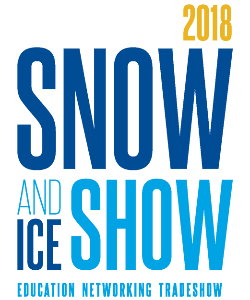
The Snow and Ice Show will be held May 1-3 at the Connecticut Convention Center in Hartford. The trade-show-style conference provides networking opportunities and educational programming focused on the modern principles of successful snow and ice management. Details.
[divider]
 2018 APWA North American Snow Conference
2018 APWA North American Snow Conference
The 2018 APWA North American Snow Conference will be held May 6-9 in Indianapolis. The annual conference features presentations from snow and ice professionals and an exhibit hall of winter maintenance solutions. Details.
[divider]
2018 Snowfighters Conference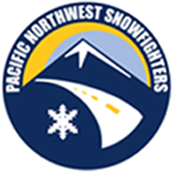
Pacific Northwest Snowfighters (PNS) will host its 2018 conference in Spokane, Washington, June 5-6. PNS has become nationally recognized as a leader in establishing and standardizing chemical products for snow and ice control. The conference will focus on training, education and new technology for the snowfighting professional. Details.
[divider]
Salt of the Earth: 2018 World Salt Symposium
The Salt Institute will hold the Salt of the Earth: 2018 World Salt Symposium June 19-21 in Park City, Utah. The symposium focuses on the latest research and development in the international salt sector. Salt experts from several countries will present on a wide spectrum of subjects related to sodium chloride salt, water conditioning, winter maintenance and the environment. Details.
[divider]
2018 Annual Snow & Ice Symposium
SIMA will hold the 2018 Annual Snow & Ice Symposium June 26-29 in Cleveland, Ohio. The conference offers a two-day trade show and three days of education, networking and activities. Details.
[divider]
News
Clear Roads Annual Survey of Winter Maintenance Data 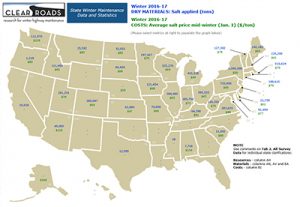
The Annual Survey of State Winter Maintenance Data from the 2016-2017 winter season is now available in an interactive map-based spreadsheet. This multi-year Clear Roads project systematically compiles and analyzes a range of materials and cost data from state DOTs. Three years of data are now included. Project page.

2017 Road Weather Management Performance Measures
The Federal Highway Administration’s Road Weather Management Program (RWMP) assesses its progress toward meeting programmatic objectives through established performance measures. This updated report evaluates 27 performance measures of state practices and capabilities in road weather management. Report.
[divider]

Guidelines for Deploying Connected Vehicle-Enabled WRTM Strategies
Weather Response Traffic Management (WRTM) strategies are used today to provide travelers with advance notification of hazardous road conditions and appropriate actions that can be taken in response to adverse weather conditions. Connected Vehicle-Enabled WRTM (CV-WRTM) is an approach that leverages the connectivity between transportation structures and vehicles. The Federal Highway Administration’s Road Weather Management Program and Intelligent Transportation Systems Joint Program Office published a report providing high-level guidelines for transportation agencies on how they can incorporate road weather connected vehicle data for traffic management operations and decision-making. Report.
[divider]
Road Weather Management Capability Maturity Framework Tool
This Federal Highway Administration tool, intended for agencies and regions, evaluates an agency’s ability to effectively manage operations during adverse weather conditions. Once the existing capability levels are determined, a list of concrete actions is created that agencies can use to raise their capabilities to the desired levels. Project page.
[divider]
“First Steps Toward Safe and Sustainable Snowfighting,” APWA Reporter, November 2017
In this two-part article series, three basic winter maintenance operations changes are recommended that agencies can implement to become safe and sustainable snowfighters. Step one involves calibrating spreader equipment, which results in using less materials and thus saving costs. The other two steps include replacing steel cutting edges with more effective long-lasting blades and measuring pavement temperature to aid in setting application rates—both changes also resulting in cost savings. Article (see pages 18-19).
[divider]
“Second Steps Toward Safe and Sustainable Snowfighting,” APWA Reporter, December 2017
In this second part of the series, this article examines the three most common types of materials agencies use to combat snow and ice: solid rock salt, abrasives, and mixtures of abrasives and rock salt. Which materials and mixtures to use are determined by the level of service that agencies are trying to achieve. Article (see pages 22-23).
“How to Winterize Your Trucks Before the Cold Season Takes Full Effect,” Equipment World, December 2017
This article highlights the importance of using winter-friendly products and inspecting engines and parts to maintain fleets during the winter season. Examples include using a lower-viscosity oil, which can maintain flow in low temperatures, and inspecting coolant systems and radiator hoses before the cold season starts. Article.
[divider]
Research Reports
Snowplow Operator and Supervisor Training
Clear Roads
Clear Roads recently completed Project 12-04, which developed a comprehensive snowplow operator and supervisor training program that provides flexibility for states to modify or update the content as needed. The 22-module program covers equipment, materials, techniques and procedures. Details.
[divider]
Expanding the Adoption on Private Lands: Blowing-and-Drifting Snow Control Treatments and the Cost Effectiveness of Permanent versus Non-Permanent Treatment Options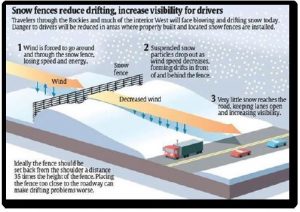
Minnesota Department of Transportation
Previous research demonstrated the ability of snow fences to significantly lower costs for MnDOT. Due to the lack of adoption of snow fences to mitigate blowing-and-drifting snow problem areas, this project sought to develop an effective outreach program to promote greater adoption and increase cost savings. Report.
[divider]
Evaluation of the GPS/AVL Systems for Snow and Ice Operations Resource Management 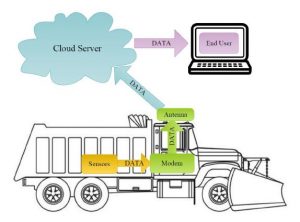
Ohio Department of Transportation
In this project, Ohio Department of Transportation explores methods to increase efficiency and costs of maintenance operations by using Global Positioning System (GPS) and Automatic Vehicle Location (AVL) resource management systems. Data gathered from the system helps evaluate the productivity of snowplow drivers and monitor road conditions. Report.
[divider]
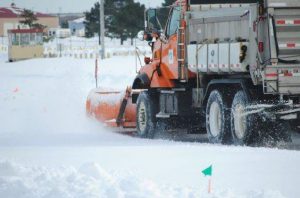 Salt Brine Blending to Optimize Deicing and Anti-Icing Performance and Cost Effectiveness: Phase III
Salt Brine Blending to Optimize Deicing and Anti-Icing Performance and Cost Effectiveness: Phase III
Minnesota Department of Transportation
This report evaluated factors that impact the effectiveness of deicers and anti-icers when combined with plowing. The treatments were tested in parallel conditions on actual pavements to assess intuitions based on observations and anecdotal evidence. Report.
[divider]
Installing Snowplow Cameras and Integrating Images into MnDOT’s Traveler Information System 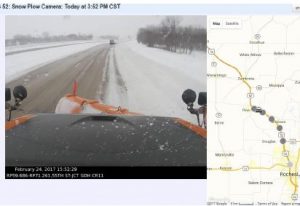
Minnesota Department of Transportation
This project aimed to provide near-real-time road images by installing video dash- and ceiling-mounted cameras on 226 Minnesota Department of Transportation (MnDOT) snowplows. The cameras, integrated with the onboard mobile data computer/automated vehicle location (MDC/AVL) equipment, automatically captured snapshots of road conditions that provided valuable weather information benefiting MnDOT staff and the traveling public. Report.
[divider]
Pilot Testing a Naturalistic Driving Study to Investigate Winter Maintenance Operator Fatigue During Winter Emergencies 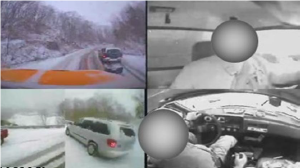
Virginia Tech Transportation Institute
This study pilot-tested the feasibility of evaluating winter maintenance operator fatigue during winter emergencies using naturalistic driving data. Results showed that fatigue was a factor in 33% of safety-critical events, and drivers averaged less sleep during winter emergencies than non-winter emergencies. Report.
[divider]
Research in Progress
Lifecycle Assessment Using Snowplow Trucks’ Automatic Vehicle Location (AVL) Data
Utah Department of Transportation 
This project aims to evaluate and measure the impacts of state funds allocated for replacing aging snowplow trucks. Researchers are also exploring whether real-time automatic vehicle location (AVL) data from UDOT’s snowplow trucks can be used to update the department’s life-cycle model for the trucks. The high-resolution data can help evaluate the department’s current replacement criteria for snowplow trucks (such as age, mileage and condition score) to determine whether the replacement decision is made properly. Project PDF.
[divider]
Developing Friction Data to Support the Optimal Use of Pre-wet Deicing Salt for Enhanced Winter Mobility
Center for Advanced Multimodal Mobility Solutions and Education, University of North Carolina, Charlotte 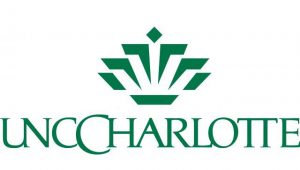
This project seeks to understand the influence of prewetting product type, prewetting ratio, and application rate of prewet deicing salt on the friction performance of deiced asphalt pavements. By conducting a customized laboratory testing program and developing a plan for subsequent field tests, the project’s ultimate goal is to generate the data needed to optimize the use of prewet deicing salts for enhanced winter mobility. Abstract.
[divider]
Modeling the Macroscopic Effects of Winter Maintenance Operations on Traffic Mobility on Washington Highways
Center for Advanced Multimodal Mobility Solutions and Education, University of North Carolina, Charlotte 
Implementing anti-icing strategies combined with smart snowplow technologies has improved the level of service on winter highways. The mobility effects of such best practices, however, remain anecdotal and need to be systematically investigated and quantified. This study lays the foundational work for modeling the macroscopic effects of winter maintenance operations on traffic mobility in the Pacific Northwest, with the first case study conducted on Washington highways. Abstract.
[divider]
To be notified when new issues of this newsletter are posted and to receive the latest Clear Roads news and project updates, join our mailing list.

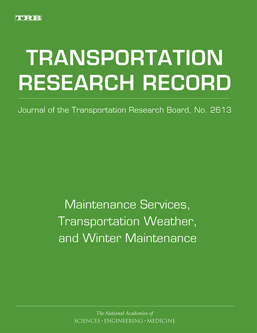
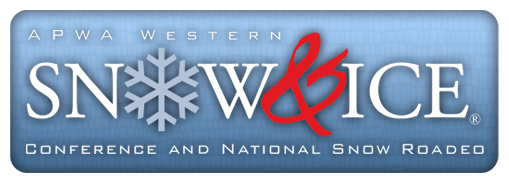 2017 APWA Western Snow & Ice Conference and National Snow Roadeo
2017 APWA Western Snow & Ice Conference and National Snow Roadeo 2018 APWA North American Snow Conference
2018 APWA North American Snow Conference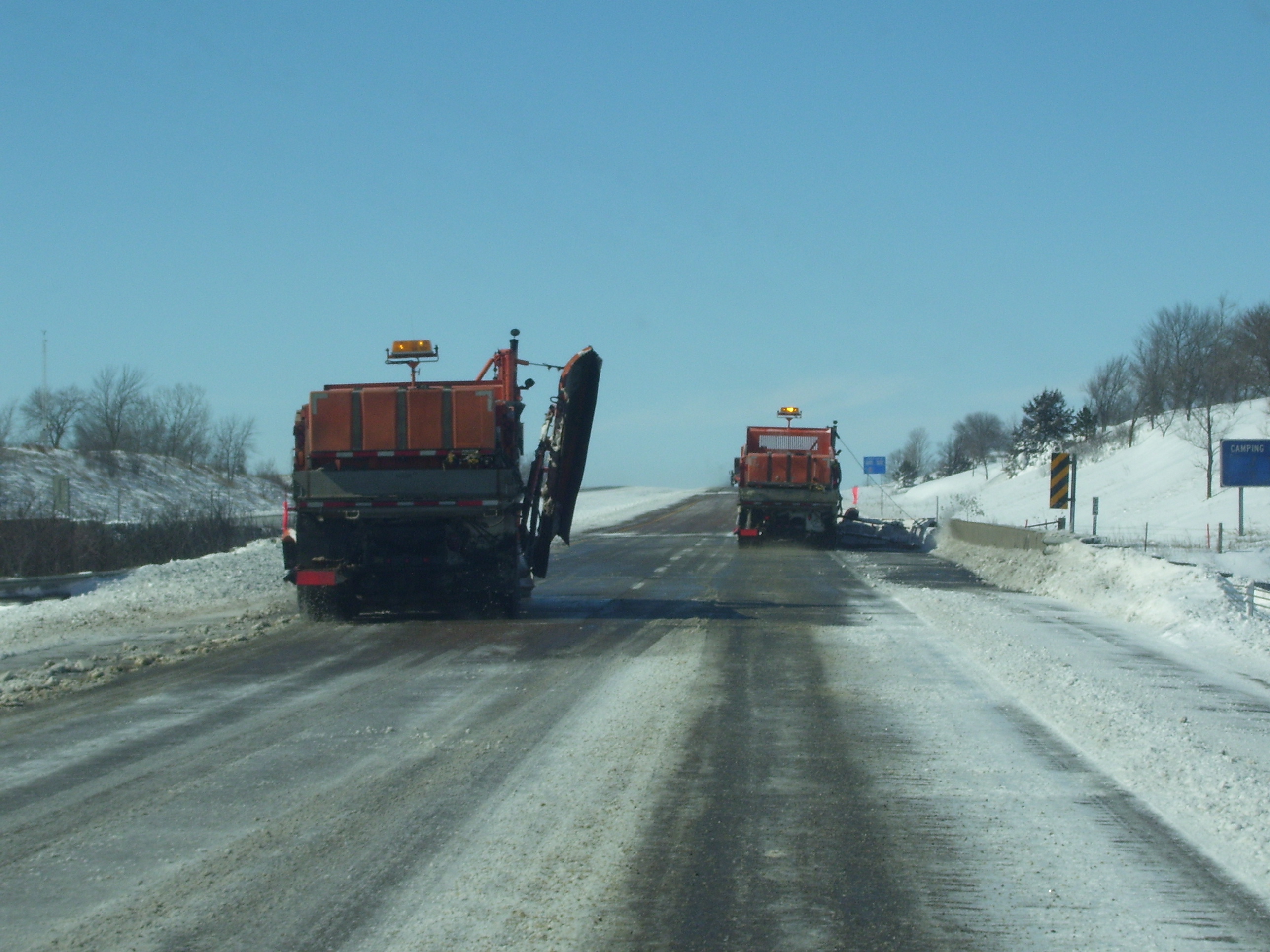 Snow Removal Performance Metrics
Snow Removal Performance Metrics Historical Winter Weather Assessment for Snow Fence Design Using a Numerical Weather Model
Historical Winter Weather Assessment for Snow Fence Design Using a Numerical Weather Model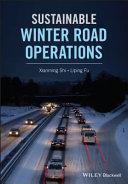 Recent Advances in Sustainable Winter Road Operations
Recent Advances in Sustainable Winter Road Operations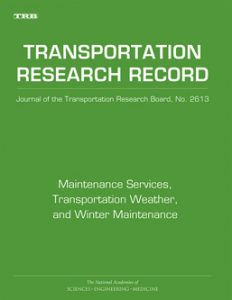
 Adaptive Management to Improve Deicing Operations
Adaptive Management to Improve Deicing Operations Iowa DOT Office of Maintenance Winter Operations Decision Support Tools
Iowa DOT Office of Maintenance Winter Operations Decision Support Tools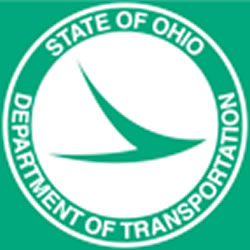 Effects of Tree Canopy on Pavement Condition, Safety and Maintenance – Phase 2
Effects of Tree Canopy on Pavement Condition, Safety and Maintenance – Phase 2
 Snow & Ice Symposium
Snow & Ice Symposium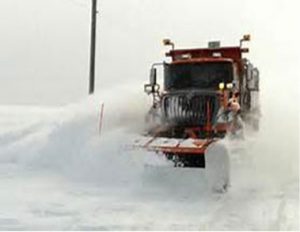 FHWA 2017 Road Weather Management Stakeholder Meeting
FHWA 2017 Road Weather Management Stakeholder Meeting AASHTO Subcommittee on Maintenance Annual Meeting
AASHTO Subcommittee on Maintenance Annual Meeting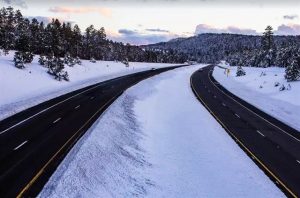
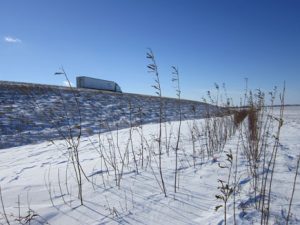
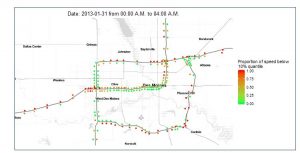 Improving Estimates of Real-Time Traffic Speeds During Weather for Winter Maintenance Performance Measurements
Improving Estimates of Real-Time Traffic Speeds During Weather for Winter Maintenance Performance Measurements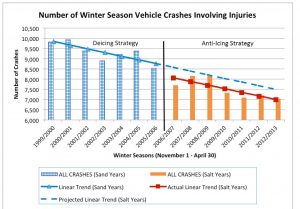 A Reduction in Nonfatal-Injury Motor Vehicle Crashes with Anti-Icing Technology
A Reduction in Nonfatal-Injury Motor Vehicle Crashes with Anti-Icing Technology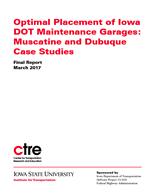 Optimal Placement of Iowa DOT Maintenance Garages: Muscatine and Dubuque Case Studies
Optimal Placement of Iowa DOT Maintenance Garages: Muscatine and Dubuque Case Studies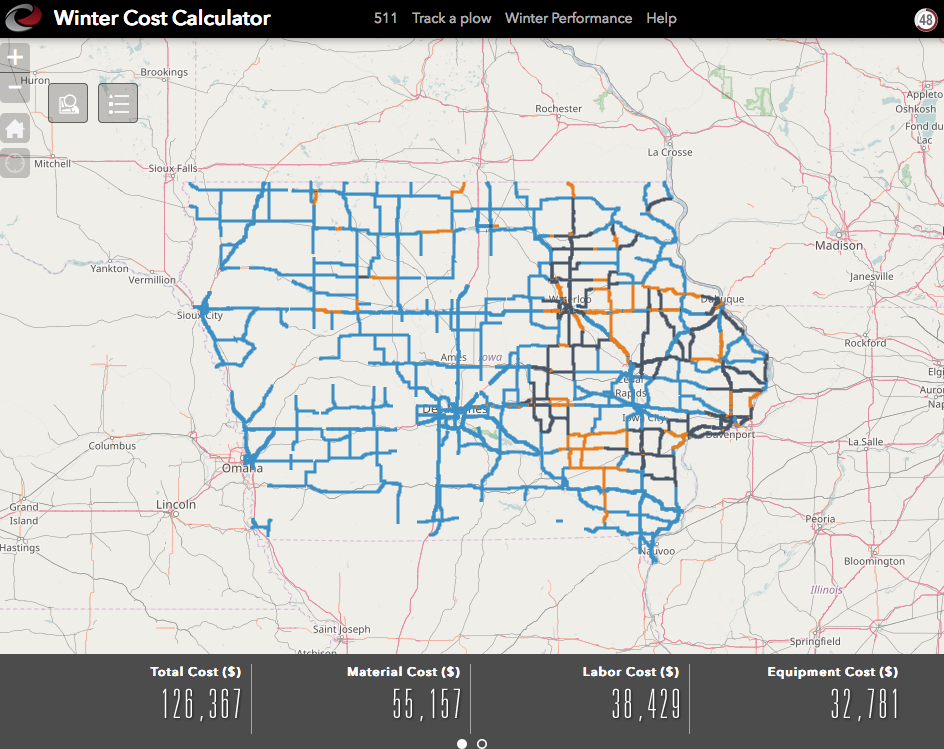
 North American Snow Conference
North American Snow Conference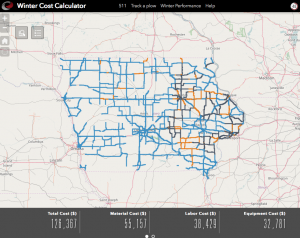
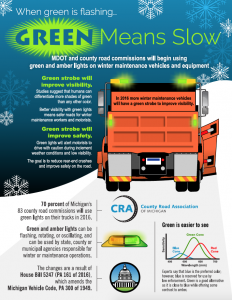 Green Lights Improve Plow Visibility in Michigan
Green Lights Improve Plow Visibility in Michigan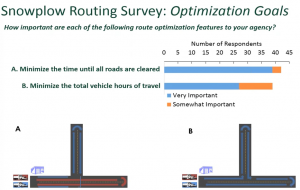 Identifying Best Practices for Snowplow Route Optimization
Identifying Best Practices for Snowplow Route Optimization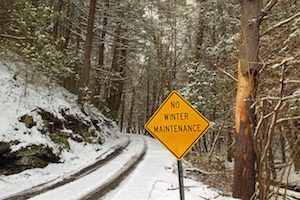 North American Study on Contracting Snow and Ice Response
North American Study on Contracting Snow and Ice Response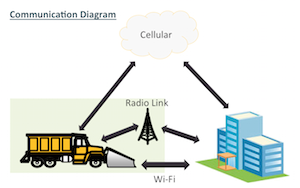 Plug-and-Play Initiative: Phase II
Plug-and-Play Initiative: Phase II Snowplow Truck Washing Practices: Synthesis Report
Snowplow Truck Washing Practices: Synthesis Report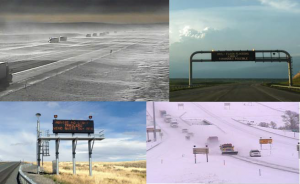 Collaboration Across the Road Weather Enterprise: The Pathfinder Project
Collaboration Across the Road Weather Enterprise: The Pathfinder Project Field Test of Visibility Markers for Snow Maintenance Equipment
Field Test of Visibility Markers for Snow Maintenance Equipment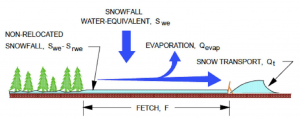 Snow Fences for Reducing the Impacts of Snow Drifts on Highways: A Renewed Perspective
Snow Fences for Reducing the Impacts of Snow Drifts on Highways: A Renewed Perspective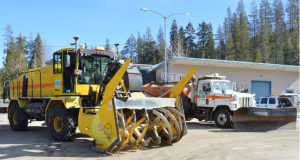
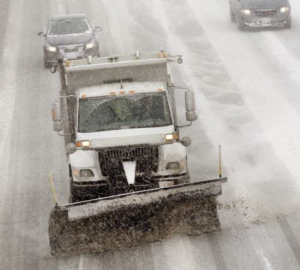 Route Optimization, Phase 1
Route Optimization, Phase 1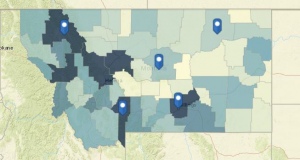
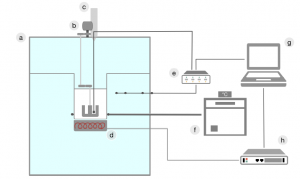 Measuring Ice Melting Capacity Using Calorimetry
Measuring Ice Melting Capacity Using Calorimetry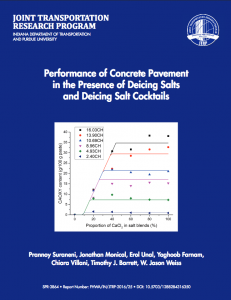 Performance of Concrete Pavement in the Presence of Deicing Salts and Deicing Salt Cocktails
Performance of Concrete Pavement in the Presence of Deicing Salts and Deicing Salt Cocktails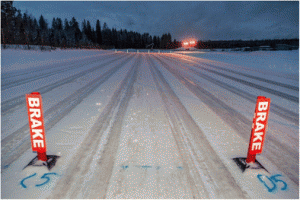 Effects of Winter Tire Type on Roughness and Polishing of Road Surfaces Covered with Ice and Compact Snow
Effects of Winter Tire Type on Roughness and Polishing of Road Surfaces Covered with Ice and Compact Snow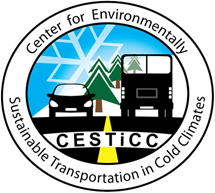 Investigation of Alternative Deicers for Snow and Ice Control
Investigation of Alternative Deicers for Snow and Ice Control Techniques for Efficient Detection of Rapid Weather Changes and Analysis of Their Impacts on a Highway Network
Techniques for Efficient Detection of Rapid Weather Changes and Analysis of Their Impacts on a Highway Network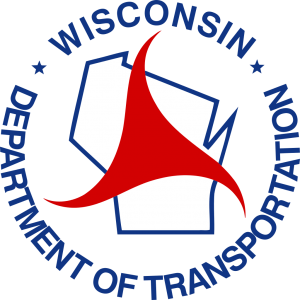

 2018 International Winter Road Congress Call for Papers
2018 International Winter Road Congress Call for Papers APWA Reporter Features Clear Roads Salt Management Research
APWA Reporter Features Clear Roads Salt Management Research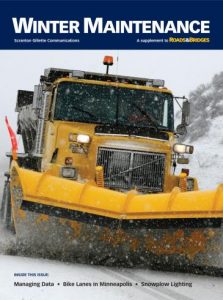 Roads & Bridges Winter Maintenance Supplement Features Clear Roads Research
Roads & Bridges Winter Maintenance Supplement Features Clear Roads Research Kentucky Wins Computerworld Award for Use of Data
Kentucky Wins Computerworld Award for Use of Data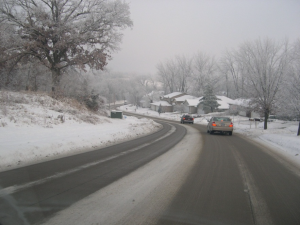 Pacific Northwest Snowfighters Posts Conference Presentations
Pacific Northwest Snowfighters Posts Conference Presentations Iowa State University Study Suggests Faster Plow Replacement Saves Money
Iowa State University Study Suggests Faster Plow Replacement Saves Money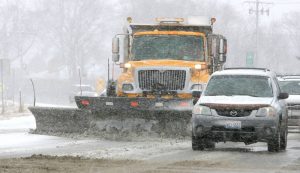
 Connected Plows Help Fairbanks Fight Snow
Connected Plows Help Fairbanks Fight Snow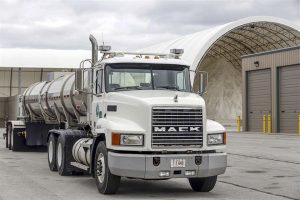 Ohio DOT Plans to Expand Brine Usage
Ohio DOT Plans to Expand Brine Usage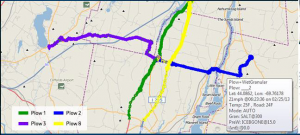 Synthesis on GPS/AVL Equipment Used in Winter Maintenance
Synthesis on GPS/AVL Equipment Used in Winter Maintenance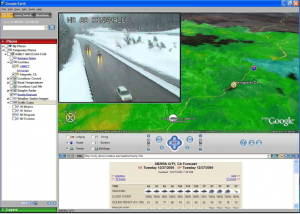 Mobile Real-Time Information System for Snow Fighter Supervisors
Mobile Real-Time Information System for Snow Fighter Supervisors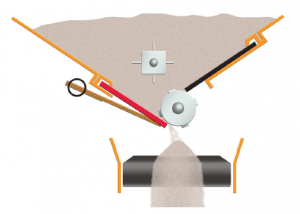
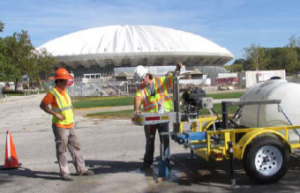 Evaluation of Software Simulation of Road Weather Information System
Evaluation of Software Simulation of Road Weather Information System Snowplow Operator Driving Time: Survey of State and Local Practices
Snowplow Operator Driving Time: Survey of State and Local Practices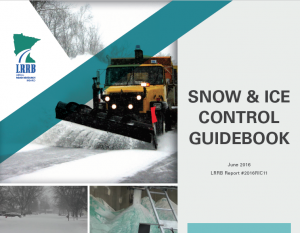 Snow & Ice Control Guidebook
Snow & Ice Control Guidebook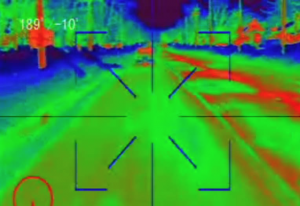 Long-Term & Short-Term Measures of Roadway Snow and Ice Control Performance
Long-Term & Short-Term Measures of Roadway Snow and Ice Control Performance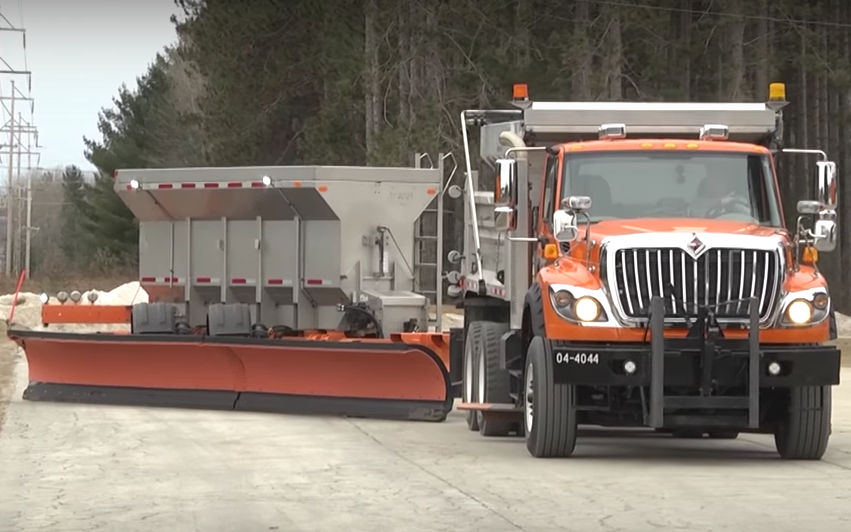 Evaluating the Use of Tow Plows in Michigan
Evaluating the Use of Tow Plows in Michigan Using Operational Data to Access Mobility and Crash Experience During Winter Conditions
Using Operational Data to Access Mobility and Crash Experience During Winter Conditions Snow and Ice Leadership Seminar
Snow and Ice Leadership Seminar Mid Canada Snow Conference
Mid Canada Snow Conference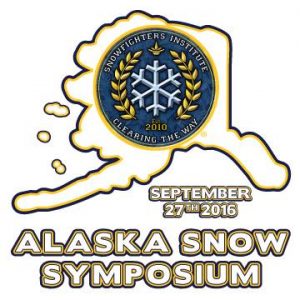 3rd Annual Alaska Snow Symposium
3rd Annual Alaska Snow Symposium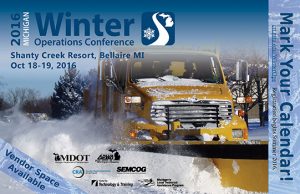 Michigan Winter Operations Conference
Michigan Winter Operations Conference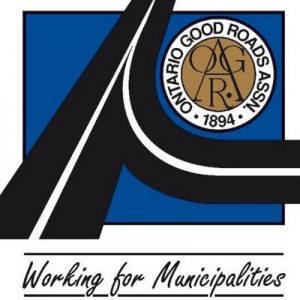 Managing Winter Operations Workshop
Managing Winter Operations Workshop 10th International Conference on Managing Fatigue
10th International Conference on Managing Fatigue $60 Innovation Saves 30 Minutes Per Deicer Fill-Up
$60 Innovation Saves 30 Minutes Per Deicer Fill-Up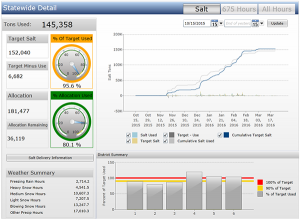 Iowa’s Salt Dashboard Helps Garages Use Salt Efficiently
Iowa’s Salt Dashboard Helps Garages Use Salt Efficiently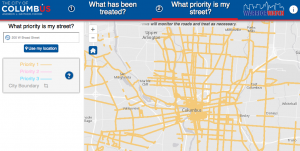 Can Tinted Salt Improve Driver Satisfaction?
Can Tinted Salt Improve Driver Satisfaction?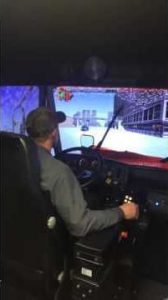 MnDOT Plow Simulator Improves Safety
MnDOT Plow Simulator Improves Safety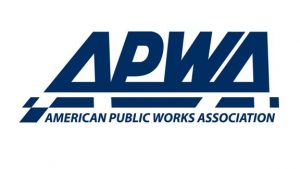 APWA Names Excellence in Snow and Ice Control Award Winners
APWA Names Excellence in Snow and Ice Control Award Winners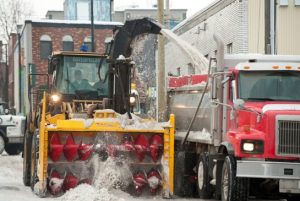 Ottawa Rejects Changes to Snow Plowing Standards
Ottawa Rejects Changes to Snow Plowing Standards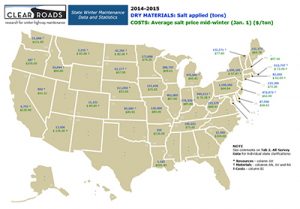 Annual Survey of State Winter Maintenance Data
Annual Survey of State Winter Maintenance Data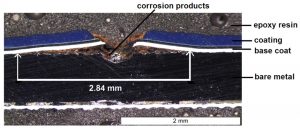 Evaluation of Cost Effective Protective Coatings for ODOT Snow & Ice Equipment
Evaluation of Cost Effective Protective Coatings for ODOT Snow & Ice Equipment Bio-based Renewable Additives for Anti-icing Applications (Phase I)
Bio-based Renewable Additives for Anti-icing Applications (Phase I)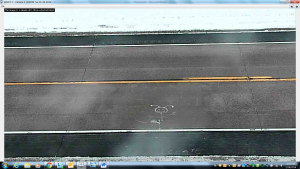 Ensuring Accuracy of Roadway Surface Condition Sensors
Ensuring Accuracy of Roadway Surface Condition Sensors Identification and Recommendations for Correction of Equipment Factors Causing Fatigue in Snowplow Operators
Identification and Recommendations for Correction of Equipment Factors Causing Fatigue in Snowplow Operators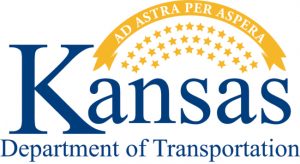 Self-Deicing LED Signals
Self-Deicing LED Signals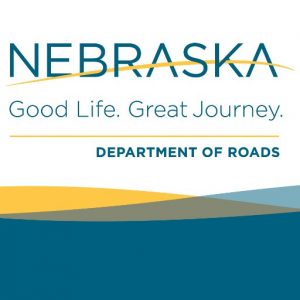 Phase I: Developing the NDOR Winter Severity Index to Improve Safety and Mobility
Phase I: Developing the NDOR Winter Severity Index to Improve Safety and Mobility SIMA Snow & Ice Symposium
SIMA Snow & Ice Symposium AASHTO Subcommittee on Maintenance Annual Meeting
AASHTO Subcommittee on Maintenance Annual Meeting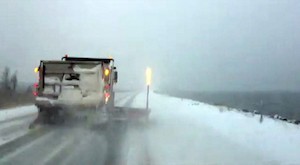 Michigan Implements New Wing Plow Lighting System
Michigan Implements New Wing Plow Lighting System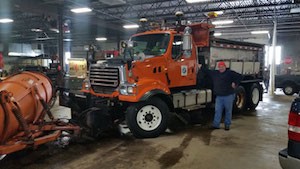 Minnesota Pilots Snowplow Driver-Assist System
Minnesota Pilots Snowplow Driver-Assist System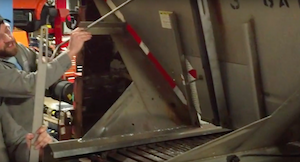 Salt-Door Stop Regulates Salt Flow
Salt-Door Stop Regulates Salt Flow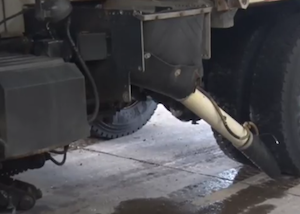 MDOT System Reduces Salt Scatter
MDOT System Reduces Salt Scatter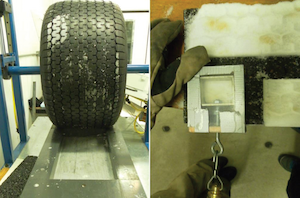 Understanding the Effectiveness of Non-Chloride Liquid Agricultural By-Products and Solid Complex Chloride/Mineral Products Used in Snow and Ice Control Operations
Understanding the Effectiveness of Non-Chloride Liquid Agricultural By-Products and Solid Complex Chloride/Mineral Products Used in Snow and Ice Control Operations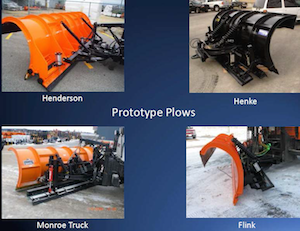 Using Mechanical Ice Breakers to Improve Snow and Ice Removal Operations
Using Mechanical Ice Breakers to Improve Snow and Ice Removal Operations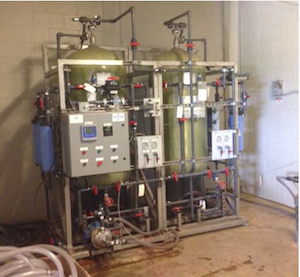 Implementation and Analysis of Snow Removal Wash Water Reuse Research
Implementation and Analysis of Snow Removal Wash Water Reuse Research Winter Maintenance Performance Measure
Winter Maintenance Performance Measure Use of Travel Time, Travel Time Reliability, and Winter Condition Index Information for Improved Operation of Rural Interstates
Use of Travel Time, Travel Time Reliability, and Winter Condition Index Information for Improved Operation of Rural Interstates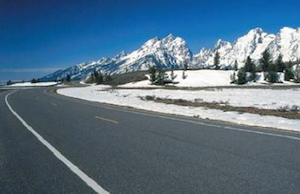 Snow Route Optimization
Snow Route Optimization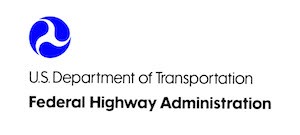 2015 Road Weather Management Performance Measures Survey, Analysis and Report
2015 Road Weather Management Performance Measures Survey, Analysis and Report Using Operational Data to Access Mobility and Crash Experience During Winter Weather Conditions
Using Operational Data to Access Mobility and Crash Experience During Winter Weather Conditions PWX Public Works Expo
PWX Public Works Expo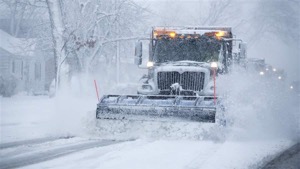 Pew Charitable Trusts Reviews State Snowfighting Efforts
Pew Charitable Trusts Reviews State Snowfighting Efforts Michigan Tests GPS Plow Trackers
Michigan Tests GPS Plow Trackers Iowa Upgrades GPS/AVL System
Iowa Upgrades GPS/AVL System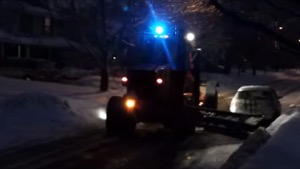 Agencies Consider New Plow Light Colors
Agencies Consider New Plow Light Colors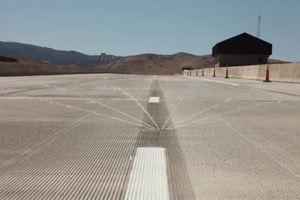 Nevada Installs Automated Deicer Sprayer
Nevada Installs Automated Deicer Sprayer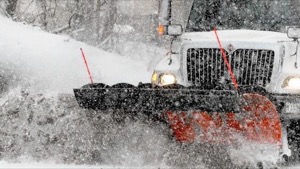 Illinois Village Creates Plow Ride-Along Program
Illinois Village Creates Plow Ride-Along Program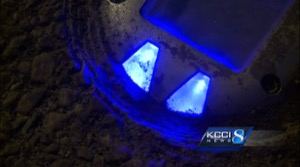 Iowa Tests Slick Road Sensor
Iowa Tests Slick Road Sensor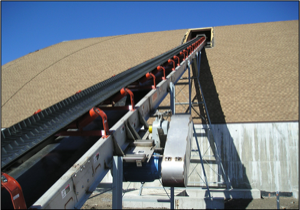 Roadway Salt Best Management Practices
Roadway Salt Best Management Practices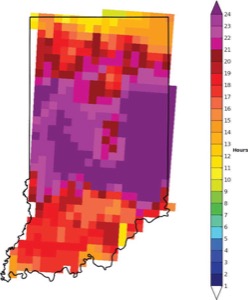 Road Weather Severity Based on Environmental Energy
Road Weather Severity Based on Environmental Energy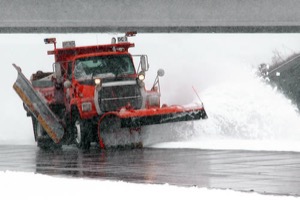 Automatically Measuring Traffic Recovery Times After Snowstorms
Automatically Measuring Traffic Recovery Times After Snowstorms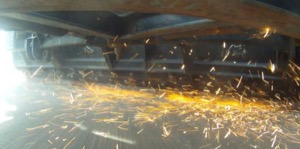 Performance Evaluation of Snow and Ice Plows
Performance Evaluation of Snow and Ice Plows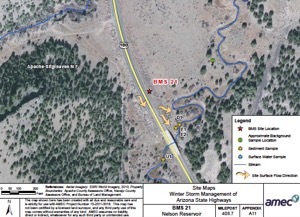 Development of ADOT Application Rate Guidelines for Winter Storm Management of Chemical Additives through an Ambient Monitoring System
Development of ADOT Application Rate Guidelines for Winter Storm Management of Chemical Additives through an Ambient Monitoring System Effective Use and Application of Winter Roadway Maintenance Materials Enhancers
Effective Use and Application of Winter Roadway Maintenance Materials Enhancers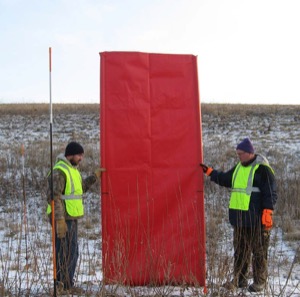 Assessing the Use of Shrub-Willows for Living Snow Fences in Minnesota
Assessing the Use of Shrub-Willows for Living Snow Fences in Minnesota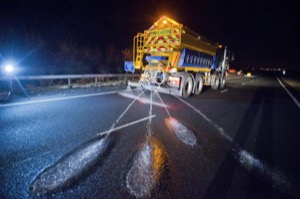 Trials of the Longevity of Brine and Pre-Wetted Salt on Typical UK Road Surfacings
Trials of the Longevity of Brine and Pre-Wetted Salt on Typical UK Road Surfacings Winter Highway Maintenance Operations: Connecticut
Winter Highway Maintenance Operations: Connecticut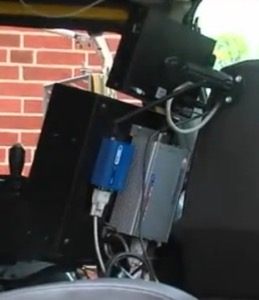 Pennsylvania DOT to Install AVL on Plows
Pennsylvania DOT to Install AVL on Plows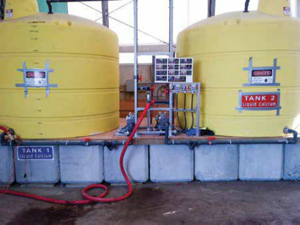 APWA Reporter Winter Maintenance Issue
APWA Reporter Winter Maintenance Issue Roads & Bridges Winter Maintenance Supplement
Roads & Bridges Winter Maintenance Supplement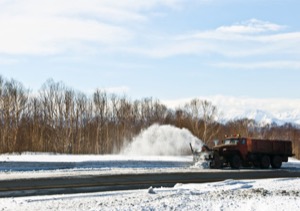 Spring-Loaded Plows Tested in New York
Spring-Loaded Plows Tested in New York Boston Plans Change after Historic Winter
Boston Plans Change after Historic Winter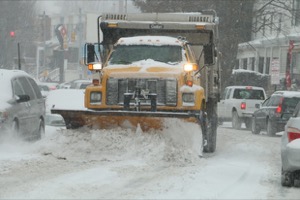 Missing Maryland Plow Blades Result in Upgraded Security
Missing Maryland Plow Blades Result in Upgraded Security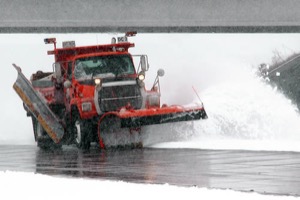 Estimation of Winter Snow Operation Performance Measures with Traffic-Flow Data, Phase 2
Estimation of Winter Snow Operation Performance Measures with Traffic-Flow Data, Phase 2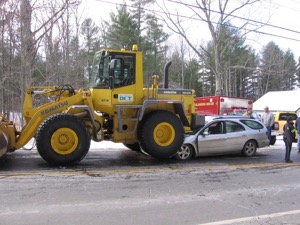 Investigation of the Performance of Backing Cameras on NHDOT Maintenance Vehicles
Investigation of the Performance of Backing Cameras on NHDOT Maintenance Vehicles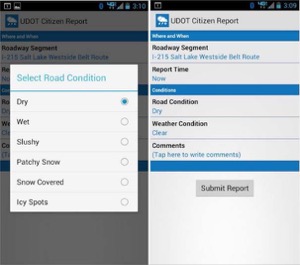 Citizen Reporting of Current Road Conditions
Citizen Reporting of Current Road Conditions Permeable Pavements in Cold Climates: State of the Art and Cold Climate Case Studies
Permeable Pavements in Cold Climates: State of the Art and Cold Climate Case Studies Quantifying the Impact New Capital Projects Will Have on Roadway Snow and Ice Control Operations
Quantifying the Impact New Capital Projects Will Have on Roadway Snow and Ice Control Operations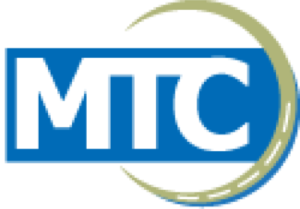 Improving Traffic Safety through Better Snow Fences: Image-Based Methods to Measure Trapped Snow Volume and the Snow Relocation Coefficient
Improving Traffic Safety through Better Snow Fences: Image-Based Methods to Measure Trapped Snow Volume and the Snow Relocation Coefficient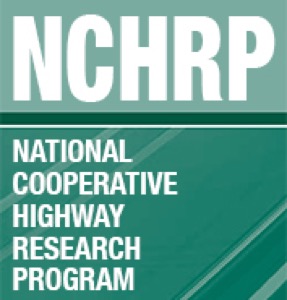 Guidelines to Incorporate the Costs and Benefits of Adaptation Measures in Preparation for Extreme Weather Events and Climate Change
Guidelines to Incorporate the Costs and Benefits of Adaptation Measures in Preparation for Extreme Weather Events and Climate Change National Winter Maintenance Peer Exchange
National Winter Maintenance Peer Exchange International Conference and Workshop on Winter Maintenance and Surface Transportation Weather
International Conference and Workshop on Winter Maintenance and Surface Transportation Weather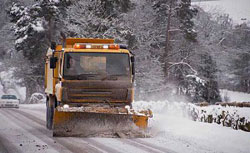 Three Cities Win APWA Excellence in Snow and Ice Control Award
Three Cities Win APWA Excellence in Snow and Ice Control Award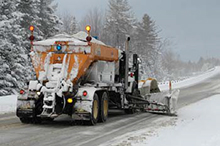 Ontario Develops New Winter Maintenance Plan
Ontario Develops New Winter Maintenance Plan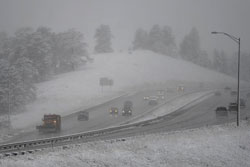 Colorado’s I-70 Maintenance Improves Performance
Colorado’s I-70 Maintenance Improves Performance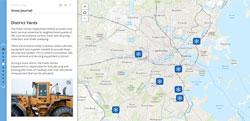 Boston’s Snow Journal Wins GIS Award
Boston’s Snow Journal Wins GIS Award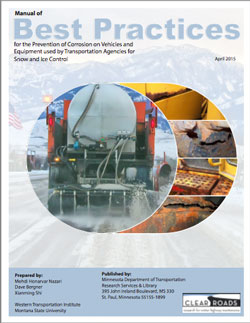 Best Practices for the Prevention of Corrosion to DOT Equipment: A User’s Manual
Best Practices for the Prevention of Corrosion to DOT Equipment: A User’s Manual Optimization of Salt Storage for County Garage Facilities
Optimization of Salt Storage for County Garage Facilities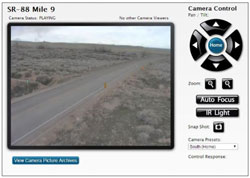 Effect of Video Camera-Based Remote Roadway Condition Monitoring on Snow Removal-Related Maintenance Operations
Effect of Video Camera-Based Remote Roadway Condition Monitoring on Snow Removal-Related Maintenance Operations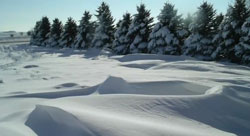 Web-Based Preventative Blowing and Drifting Snow Control Calculator Decision Tool
Web-Based Preventative Blowing and Drifting Snow Control Calculator Decision Tool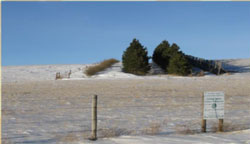 Assessment and Placement of Living Snow Fences to Reduce Highway Maintenance Costs and Improve Safety
Assessment and Placement of Living Snow Fences to Reduce Highway Maintenance Costs and Improve Safety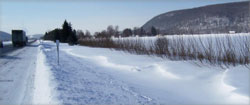 Designing, Developing and Implementing a Living Snow Fence Program for New York State
Designing, Developing and Implementing a Living Snow Fence Program for New York State Extending the Life of Paint and Reflective Markers by Using Partial Rubber Plow Blades
Extending the Life of Paint and Reflective Markers by Using Partial Rubber Plow Blades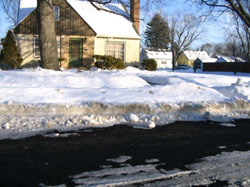 Permeable Pavements in Cold Climates: State of the Art and Cold Climate Case Studies
Permeable Pavements in Cold Climates: State of the Art and Cold Climate Case Studies Assessment of Salt Procurement and Distribution Processes
Assessment of Salt Procurement and Distribution Processes Self-Heated Pavements
Self-Heated Pavements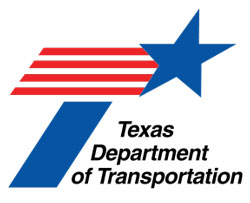 Use of Geothermal Energy for De-icing Approach Pavement Slabs and Bridge Decks
Use of Geothermal Energy for De-icing Approach Pavement Slabs and Bridge Decks